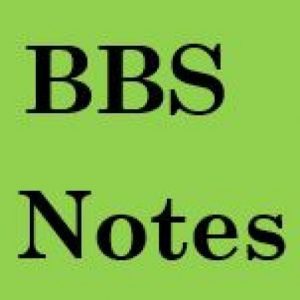We will discuss about the BBM 1st Semester Syllabus of all Subject. BBM means bachelor’s in business management.
BBM 1st Semester Syllabus of all Subject
Following is the list of the subject of TU BBM 1st Semester.
| S.N | Subject | Subject Code |
|---|---|---|
| 1 | Introductory Microeconomics | ECO 211 |
| 2 | English – I | ENG 211 |
| 3 | Principle of Management | MGT 201 |
| 4 | Business Mathematics – I | MTH 201 |
| 5 | Sociology For Business | SOC 201 |
Introductory Microeconomics: ECO 211
Following is the syllabus of Introductory Microeconomics
| Chapter | Chapter Name | Content | Time |
|---|---|---|---|
| 1 | Introduction to Microeconomics | Meaning, Scope, Types, Uses | 3 LH |
| 2 | Theory of Demand and Supply | Demand Function Supply Function Concept of elasticity of demand and supply | 6 LH |
| 3 | Theory of Consumer’s Behavior | Cardinal Vs Ordinal Utility Indifference Curve Analysis | 8 LH |
| 4 | Theory of Production | Concept of product Production Function Law of variable proportion Law of return to scale | 7 LH |
| 5 | Costs and Revenue Curves | Cost Function Various Concept of Cost Short Run Cost Long Run Cost Revenue | 8 LH |
| 6 | Theory of Product pricing | Profit Maximization and equilibrium of a firm Equilibrium price and output determination under perfect competition Equilibrium price and output determination under Monopoly Equilibrium price and output determination under monopolistic competition Oligopoly | 6 LH |
| 7 | Theory of Factor Pricing | Rent, Wage, Interest and Profits |
English: ENG 211
Following is the Syllabus of the English
| Part | Chapter | Time |
|---|---|---|
| 1 | 1. Invitation 2. Ancient Tales 3. Education 4. Actions and Consequences 5. Televison 6. Cross cultural Bridges 7. Cultural Anthropology 8. The Human Condition 9. Natural Science 10. Humor and Satire 11. Critical and Creative thinking 12. Love 13. Life and Death | 33 LH |
| 2 | 1. Paragraph to short Essay 2. Descriptive Essay 3. Narrative Essay 4. Opinion Essay 5. Comparison and Contrast Essay 6. Cause and Effect essay 7. The writing essay 8. Punctuation 9. Connectors 10. Grammer Terms | 22 LH |
Principle of Management: MGT 201
Following is the Syllabus of the Principle of Management
| Chapter | Chapter Name | Time |
|---|---|---|
| 1 | Introduction | 4 LH |
| 2 | Perspective in Management | 8 LH |
| 3 | Planning | 7 LH |
| 4 | Organizing | 8 LH |
| 5 | Leading | 7 LH |
| 6 | Controlling | 10 LH |
| 7 | Organizational Change and Development | 4 LH |
Business Mathematics I: MTH 201
Following is the Syllabus of Business Mathematics
| Chapter | Chapter Name | Time |
|---|---|---|
| 1 | Straight Lines and Functions | 6 LH |
| 2 | Simultaneous Equations | 6 LH |
| 3 | Quadratic Equations | 7 LH |
| 4 | Non- Linear Functions, Their Graphs and applications | 10 LH |
| 5 | Financial Mathematics | 10 LH |
| 6 | Differentiations and applications | 9 LH |
Sociology For Business: SOC 201
Following is the syllabus of Sociology for Business
| Chapter | Chapter Name | Time |
|---|---|---|
| 1 | Introduction to Sociology | 4 LH |
| 2 | Basic Concepts in Sociology | 4 LH |
| 3 | Social Institutions | 4 LH |
| 4 | Social Process | 4 LH |
| 5 | Social Stratification | 5 LH |
| 6 | Social Disorder, Deviance and Social Control | 2 LH |
| 7 | Social Change | 4 LH |
| 8 | Theoretical Perspective in Sociology | 6 LH |
| 9 | Research Methods in Sociology | 5 LH |
| 10 | The sociology of Management and Business administration | 10 LH |
| Project Work |
Other Important Links
Job Vacancy in Nepal: CLICK HERE












